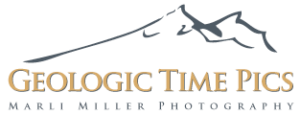Search for any geological feature below
–then click on the image to see a larger version in its correct format, a more detailed caption, and an ID number.

and please, drop me a line if you find this site useful!
*****
SOME POINTERS:
Photos typically include their locations, so you can use locations as keywords too. You get more hits with shorter words, and fewer hits as you become increasingly specific with increasing numbers of keywords. It’s best to use singular rather than plural (eg “volcano” instead of “volcanoes”).
As some words are included in others (“salt” within “basalt,” for example) you might want to be more specific to avoid getting a bunch of irrelevant photos.
Or you can just scroll down and see the most recently added photos… Enjoy!
Obsidian flow, Medicine Lake Volcano, California

Aerial view of obsidian flow, Medicine Lake Volcano, California (140617-152)
Download ImageTokatee Falls, Oregon

Tokatee Falls spills through a notch in Quaternary basalt flow. Cascade Range, Oregon. (140616-92)
Download ImageEocene fossil clams, Oregon

Eocene fossil clams (pelecypods) in Umpqua Group, Oregon. (140616-1)
Download ImageTokatee Falls, Oregon (square)

Tokatee Falls spills through a notch in Quaternary basalt flow. Cascade Range, Oregon. (140616-61)
Download ImageHoneycomb weathering in sandstone

The small holes in this rock are called tafoni –and they typically form through the growth of salt crystals that loosen the grains to create small pockets in the rock. Once the pocket forms, more seawater can collect to deposit more salt. It’s an example of a positive feedback loop. These rocks are part of the Eocene Coaledo Formation, Oregon. (140608-90)
Download ImageCoastal Erosion, Oregon

Erosion of dipping Eocene sedimentary rocks, (Coaledo Formation) along Oregon Coast. Shoreacres State Park, Oregon. (140608-108)
Download ImageHoneycomb weathering in sandstone

The small holes in this rock are called tafoni –and they typically form through the growth of salt crystals that loosen the grains to create small pockets in the rock. Once the pocket forms, more seawater can collect to deposit more salt. It’s an example of a positive feedback loop. These rocks are part of the Eocene Coaledo Formation, Oregon. (140608-91)
Download ImageErosion along dipping strata, Oregon

East-dipping Eocene Coaledo Formation. The resistant beds protrude above ground level higher than the recessive ones. Sunset Bay, Oregon. (140608-95)
Download ImagePaddleboarder on Oregon Coast

Fog near Sunset Bay on Oregon Coast. Headland in background. (140608-78)
Download ImageConglomerate of Troutdale Formation, Portland, Oregon

Exposure of Troutdale Formation, deposited by the Ancestral Columbia River, along the Willamette River in downtown Portland, Oregon. (140526-29)
Download ImageHoneycomb Weathering (Tafoni) in sandstone

The small holes in this rock are called tafoni –and they typically form through the growth of salt crystals that loosen the grains to create small pockets in the rock. Once the pocket forms, more seawater can collect to deposit more salt. It’s an example of a positive feedback loop. These rocks are part of the Eocene Coaledo Formation, Oregon. (140608-60)
Download ImageHeadland entrance to Bay, Oregon

Fog near Sunset Bay on Oregon Coast. Headland in background. (140608-56)
Download ImageCalm water in bay, Oregon

Calm water at mouth of Sunset Bay, Oregon Coast (140608-106)
Download ImageGranitic dike cutting gneiss, Victoria, BC, Canada

Granitic dike cutting gneiss at Finlayson Point, Victoria, BC, Canada (140524-39)
Download ImageGranitic boulders and high tide, BC, Canada

Granitic boulders and high tide, Vancouver Island, British Columbia, Canada (140525-51)
Download ImageCoastal erosion, BC, Canada

Waves attacking headland on the south coast of Vancouver Island, British Columbia, Canada. (140524-64)
Download ImageMigmatitic gneiss and Strait of Juan de Fuca

Migmatitic gneiss and Strait of Juan de Fuca, Victoria, British Columbia, Canada. Olympic Mountains in background. (140524-58)
Download Image




You must be logged in to post a comment.